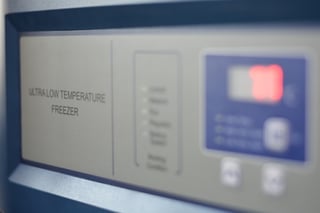Share this
blood sample shipping and storage: a brief introduction
by Neoteryx Microsampling on Jan 30, 2018 6:09:00 AM
 Blood samples are not usually tested at the same site where the blood is drawn. The blood must be shipped to the laboratory, which can be next door or across town, or hundreds of miles away.
Blood samples are not usually tested at the same site where the blood is drawn. The blood must be shipped to the laboratory, which can be next door or across town, or hundreds of miles away.
Some laboratories do unique examinations and can be located halfway across the country. Thus, labs have developed standard procedures for the storage and transport of blood samples to ensure there is no interference with the tests.
The method of transport will vary to a certain extent, depending on the tests ordered. The transportation procedures may also differ, mainly according to the way in which the blood was collected.
Whole blood can be stored at 4-8°C for less than 24 hours before the serum is separated. Whole blood cannot be frozen. In order to separate the serum, the blood must be centrifuged for 10 minutes. Then, the serum must be removed carefully with a very small pipette to avoid disturbing the red blood cells.
The serum is transferred into another tube carefully labelled with the patient’s name, identification, and date; it can then be stored. Storage must be between 4-8°C for a maximum of one week or frozen at -20 degrees. Transport of frozen samples is on ice packs.
Collection and transportation of clinical samples is fraught with risk. Venipuncture is usually done in a clinic, a lab, or a hospital because it requires expertise in drawing and processing the samples. Many things can go awry during the sampling event itself, and even more can go wrong afterward.
From the moment the blood is drawn, there is potential for human error. Labels can be applied to the wrong tubes or smeared so as to be illegible. Tubes can roll off onto the floor and smash or be misplaced. Losing a specimen or worse, mixing up samples, can cause legal problems or even destroy lives. Divorces have occurred when a paternity sample was run on the wrong person. People have been treated for diseases they don't have. Or not treated for a disease they do have.
Microsampling is a newer collection method that reduces the time and steps needed for both transport and storage. With one finger prick, the blood is collected by a droplet into capillary tubes, sealed and mailed. It can be done by the patient at home.
The fewer steps in processing there are, the less chance there is for mistakes, and the more reliable the results will be. The traditional venipuncture method opens many chances for errata. New methods may eliminate some of the old risks.
Share this
- Microsampling (206)
- Research, Remote Research (119)
- Venipuncture Alternative (105)
- Clinical Trials, Clinical Research (83)
- Mitra® Device (73)
- Therapeutic Drug Monitoring, TDM (51)
- Dried Blood Spot, DBS (39)
- Biomonitoring, Health, Wellness (30)
- Infectious Disease, Vaccines, COVID-19 (24)
- Blood Microsampling, Serology (23)
- Omics, Multi-Omics (21)
- Decentralized Clinical Trial (DCT) (20)
- Specimen Collection (18)
- Toxicology, Doping, Drug/Alcohol Monitoring, PEth (17)
- Skin Microsampling, Microbiopsy (14)
- hemaPEN® Device (13)
- Preclinical Research, Animal Studies (12)
- Pharmaceuticals, Drug Development (9)
- Harpera Device (7)
- Industry News, Microsampling News (5)
- Antibodies, MAbs (3)
- Company Press Release, Product Press Release (3)
- Environmental Toxins, Exposures (1)
- July 2025 (1)
- May 2025 (1)
- April 2025 (2)
- December 2024 (2)
- November 2024 (1)
- October 2024 (3)
- September 2024 (1)
- June 2024 (1)
- May 2024 (1)
- April 2024 (4)
- March 2024 (1)
- February 2024 (2)
- January 2024 (4)
- December 2023 (3)
- November 2023 (3)
- October 2023 (3)
- September 2023 (3)
- July 2023 (3)
- June 2023 (2)
- April 2023 (2)
- March 2023 (2)
- February 2023 (2)
- January 2023 (3)
- December 2022 (2)
- November 2022 (3)
- October 2022 (4)
- September 2022 (3)
- August 2022 (5)
- July 2022 (2)
- June 2022 (2)
- May 2022 (4)
- April 2022 (3)
- March 2022 (3)
- February 2022 (4)
- January 2022 (5)
- December 2021 (3)
- November 2021 (5)
- October 2021 (3)
- September 2021 (3)
- August 2021 (4)
- July 2021 (4)
- June 2021 (4)
- May 2021 (4)
- April 2021 (3)
- March 2021 (5)
- February 2021 (4)
- January 2021 (4)
- December 2020 (3)
- November 2020 (5)
- October 2020 (4)
- September 2020 (3)
- August 2020 (3)
- July 2020 (6)
- June 2020 (4)
- May 2020 (4)
- April 2020 (3)
- March 2020 (6)
- February 2020 (3)
- January 2020 (4)
- December 2019 (5)
- November 2019 (4)
- October 2019 (2)
- September 2019 (4)
- August 2019 (4)
- July 2019 (3)
- June 2019 (7)
- May 2019 (6)
- April 2019 (5)
- March 2019 (6)
- February 2019 (5)
- January 2019 (8)
- December 2018 (3)
- November 2018 (4)
- October 2018 (7)
- September 2018 (6)
- August 2018 (5)
- July 2018 (8)
- June 2018 (6)
- May 2018 (5)
- April 2018 (6)
- March 2018 (4)
- February 2018 (6)
- January 2018 (4)
- December 2017 (2)
- November 2017 (3)
- October 2017 (2)
- September 2017 (4)
- August 2017 (2)
- July 2017 (4)
- June 2017 (5)
- May 2017 (6)
- April 2017 (6)
- March 2017 (5)
- February 2017 (4)
- January 2017 (1)
- July 2016 (3)
- May 2016 (1)
- April 2016 (2)



No Comments Yet
Let us know what you think